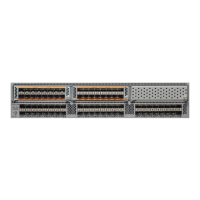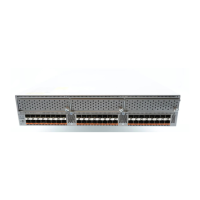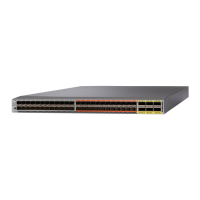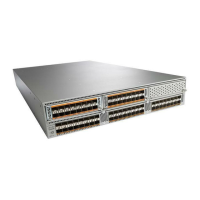Send feedback to nx5000-docfeedback@cisco.com
1-7
Cisco Nexus 5000 Series Switch CLI Software Configuration Guide
OL-16597-01
Chapter 1 Configuring Port Channels
Configuring Port Channels
• A port in passive mode cannot form a port channel with another port that is also in passive mode,
because neither port will initiate negotiation.
• A port in on mode is not running LACP.
LACP Marker Responders
Using port channels, data traffic may be dynamically redistributed due to either a link failure or load
balancing. LACP uses the Marker Protocol to ensure that frames are not duplicated or reordered because
of this redistribution. Cisco NX-OS supports only Marker Responders.
LACP-Enabled and Static Port Channels Differences
Table 1-3 provides a brief summary of major differences between port channels with LACP enabled and
static port channels.
Configuring Port Channels
You can configure multiple port channels on a device.
This section includes the following topics:
• Creating a Port Channel, page 1-7
• Adding a Port to a Port Channel, page 1-8
• Configuring Load Balancing Using Port Channels, page 1-9
• Enabling LACP, page 1-10
• Configuring Port-Channel Port Modes, page 1-10
• Configuring the LACP System Priority and System ID, page 1-11
• Configuring the LACP Port Priority, page 1-11
Creating a Port Channel
You can create a port channel before creating a channel group. Cisco NX-OS automatically creates the
associated channel group.
Enable LACP if you want LACP-based port channels (see the “Enabling LACP” section on page 1-10).
Table 1-3 Port Channels with LACP Enabled and Static Port Channels
Port Channels with LACP Enabled Static Port Channels
Protocol applied Enable globally. Not applicable.
Channel mode of links Can be either:
• Active
• Passive
Can only be On.
Maximum number of links
in channel
88

